Keith Negley is the kind of person who is impossible not to admire. He’s incredibly skilled, highly creative, and (for lack of a better word) real. His illustrations lack pretension, but never precision, making them as endlessly relatable as they are visually compelling. He’s created work for everyone from The New York Times to SubPop to the toughest client, his own son. I had the opportunity to talk to Keith about the surprising creativity of commissioned work, the joy of vintage drum kits, and what it takes to be a “real” artist. (Hint: anyone can do it!)
Do you work better in a highly organized or disorganized space?
Somewhere in the middle? I clean my studio a few times a year, usually if I know someone will be coming by. It stays clean for a few weeks and slowly turns into a mess. I have a “clean” desk with my iMac on it, and I have a “dirty” desk where I work with all my traditional media and light box. Having a dirty desk is a must. I guess as far as art studios go mine is probably pretty organized, just don’t open any of the drawers.
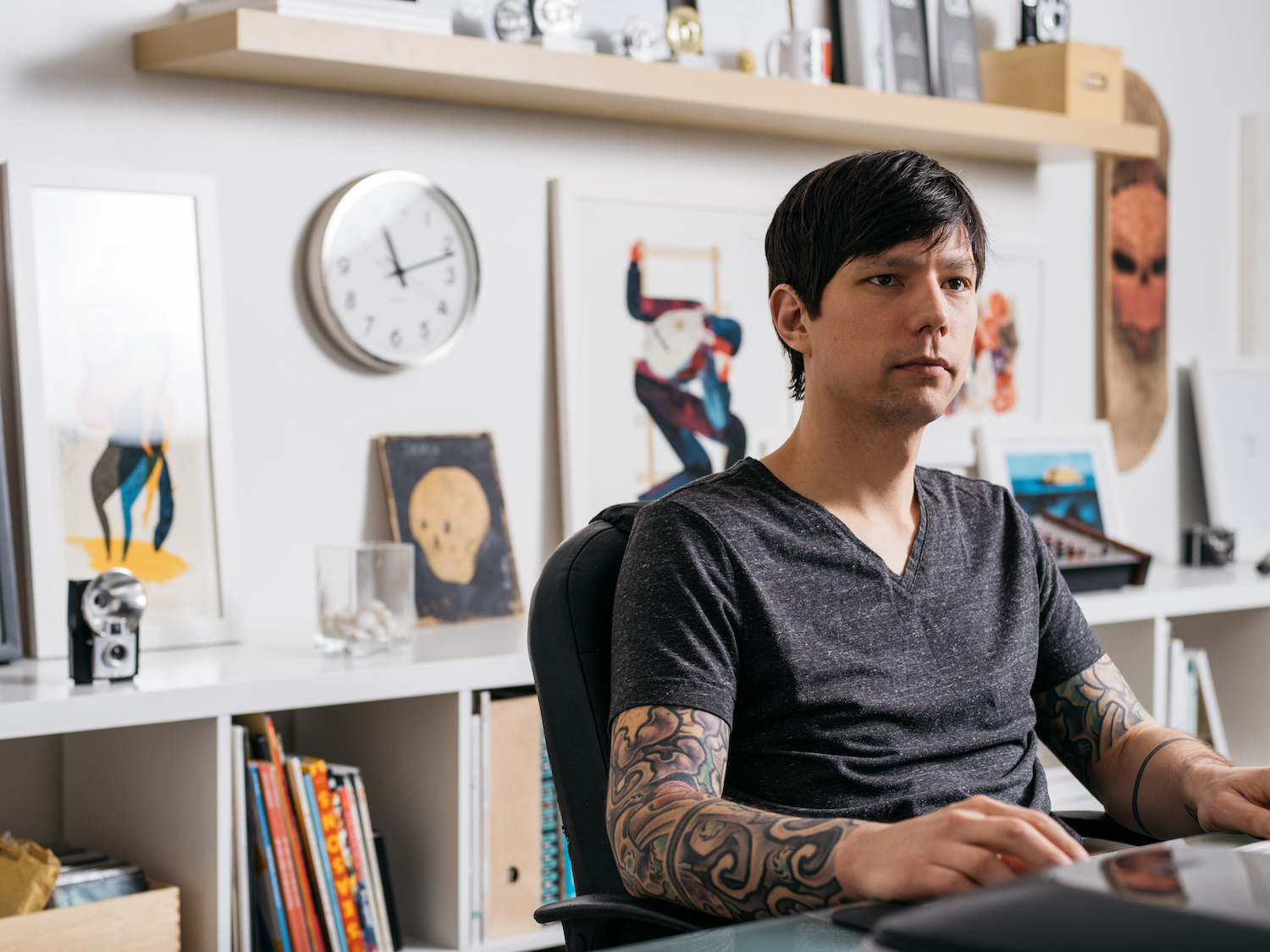
You do a lot of commissioned illustrations for clients including NPR, Sub Pop, and The New York Times. I often find that a confined context can be a breeding ground for creativity. Do you thrive more with a blank page and your own imagination or with an idea or direction from a client?
With editorial, one of my favorite aspects is being able to bend or break conventions. To take an assignment and make something that doesn’t look like a “traditional” editorial illustration. I’m motivated by the challenge to solve the problem in a way I haven’t seen done before. When I’m given total freedom with no direction I’m kinda robbed of that.
The projects where I have complete freedom are a struggle for me. Not to say I can’t do them, some of my favorite pieces come from projects like that, but they tend to be more stressful for me and require wearing a different hat. I’ll be sketching things out and concepting for ideas and I find myself saying, “You can do anything you want and THIS is the best you can come up with??”. That thought tends to haunt me through the entire process. If I get a brief or even the slightest bit of direction it gives me something to push up against. With art direction, expectations are defined like a line in the sand and I get a lot of pleasure walking that line and seeing how far I can push past it.
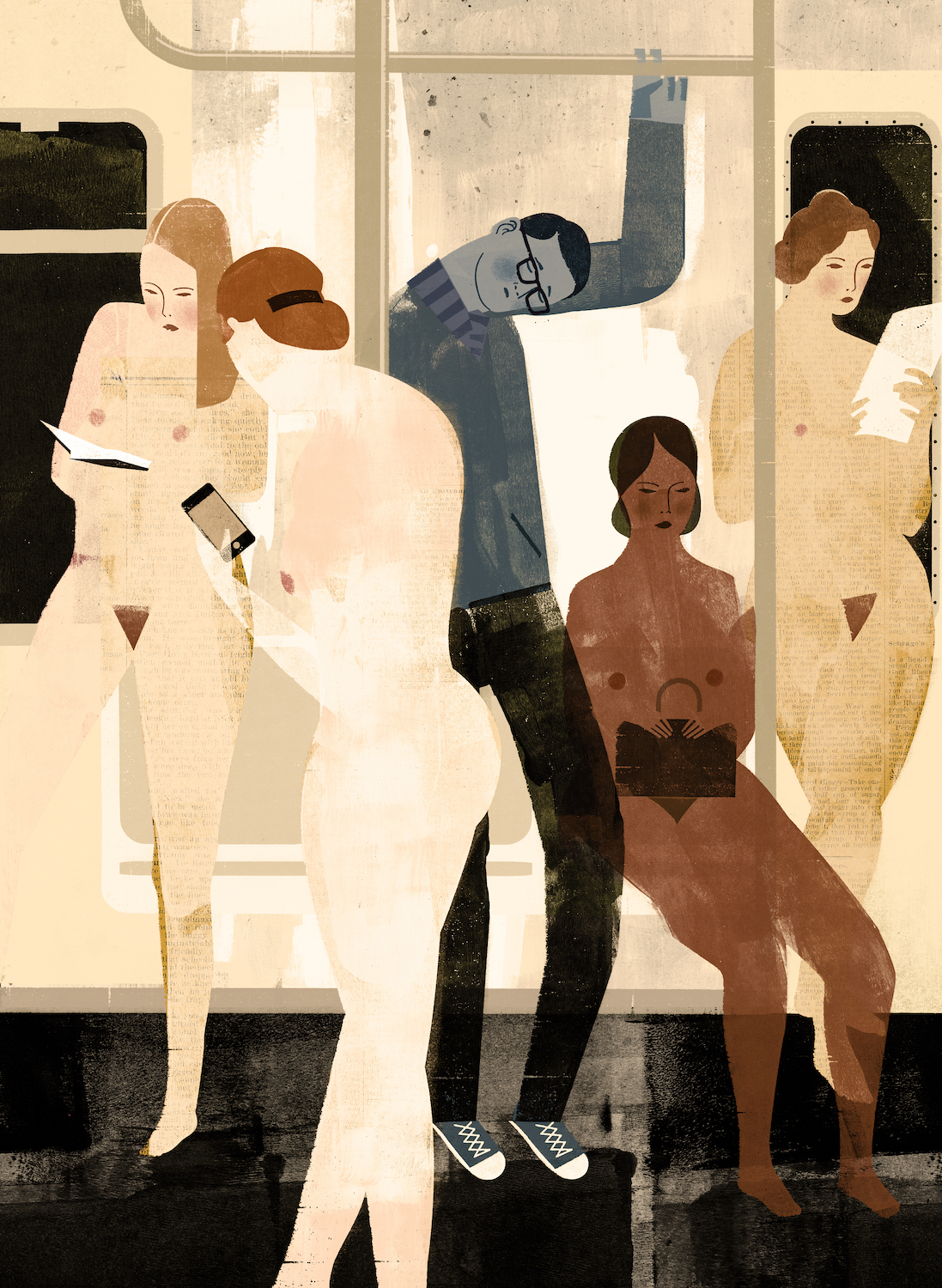
This Is Where I Admit I’m Powerless
The Pacific Northwest has such a specific aesthetic, a heavy feel. Do you find this plays into your work or into your process?
I think it plays a part in the sense that I feel much more calm and at ease living out in the mountains surrounded by trees. I lived in Brooklyn for a couple of years and it was an amazing time, but it wasn’t until I moved back to the PNW that I realized I was carrying around a lot of unnecessary tension and anxiety and I could finally let go of it. It takes less energy to get through the day out here so I can spend that energy being productive with assignments and personal projects.
Your work has so many mesmerizing layers (a la a very sophisticated Eric Carle!), how long did it take for you to settle into this style? Do you map everything out beforehand or let the piece go where it will?
Thanks! I’m a control freak but I also thrive on improvisation and experimentation. So, over time, my process has developed to appease both sides of my psyche. When I start a piece, I sketch it out on the computer fairly precisely, down to the color palette. I dial it in as far as I can so I know the base composition/underdrawing is solid and works. Once I get something I’m comfortable with, I then rebuild the whole thing with traditional media and collage it in Photoshop. I get loose with it and try all kinds of experiments until I surprise myself, it’s crucial for me to be surprised and feel that spark while I’m working on it. I always have the base composition to fall back on, so it’s not like I’m falling without a parachute, but I really enjoy not knowing how a piece will look until it’s done. If I know ahead of time how it will look before I even start it, or if my process is simply taking an idea and running it through an assembly line, I think the work suffers. I’ve worked that way in the past and it’s joyless for me.
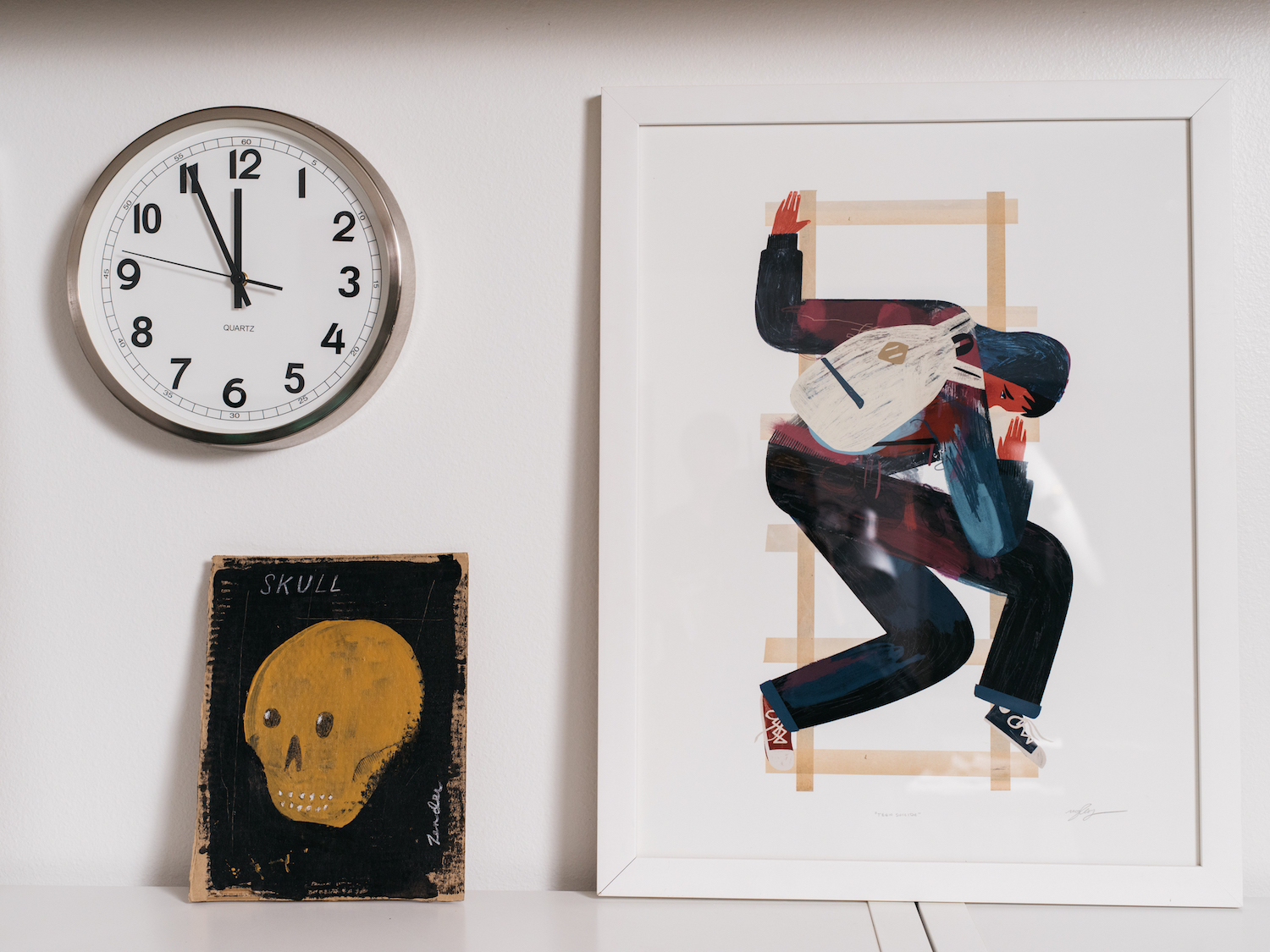
The art world is fractured and (a little watered down) with the proliferation of social media, the Internet, and all things digital. What do you think it takes to be a capitol “A” artist in our cultural climate?
I couldn’t even begin to answer that question. I frankly don’t feel I’m qualified. I’m just doing my thing in my little neck of the woods and I’m extremely grateful for anyone who is paying attention. But if I had to take a stab at it I suppose now more than ever it’s crucial to be fearless. To not be afraid to be vulnerable to your audience is key number one. I believe our deepest darkest secrets make the best art. If the thought of sharing them to an audience makes you uncomfortable, you’re probably on the right track.
Your children’s books look hilarious and amazing. What inspired you to write them?
Thanks! My son Parker was my complete inspiration. Conversations we have, and watching him navigate the world as he learns how to play with other kids has been fascinating. I hadn’t even considered making children’s books until I was reading 3 or 4 books to him every night. I was going to the library every week and checking out 20+ books at a time and it didn’t take long for me to find there was a lack of books that were saying the things I wanted to say to him. I wouldn’t be making these books if I wasn’t a parent.
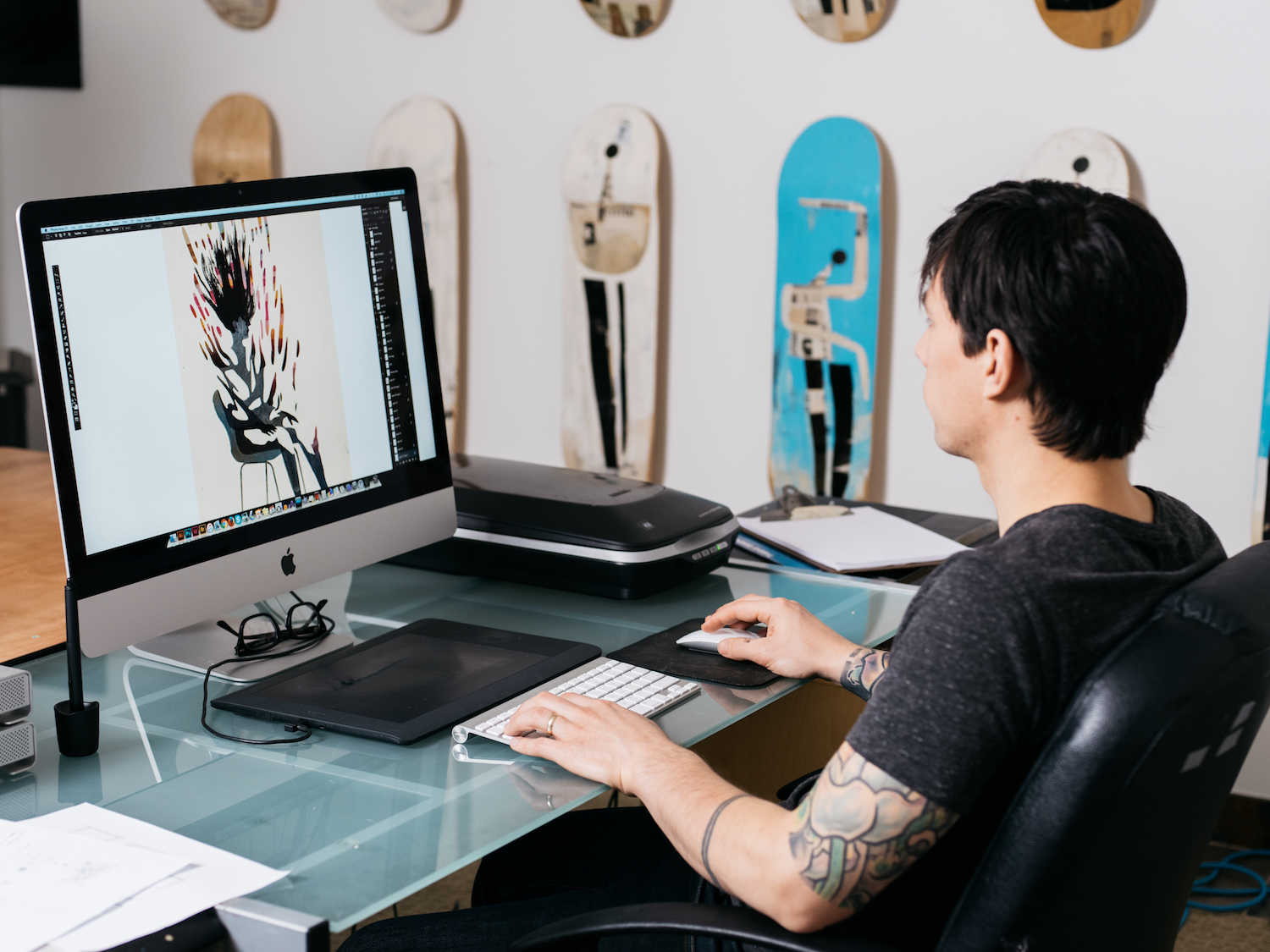
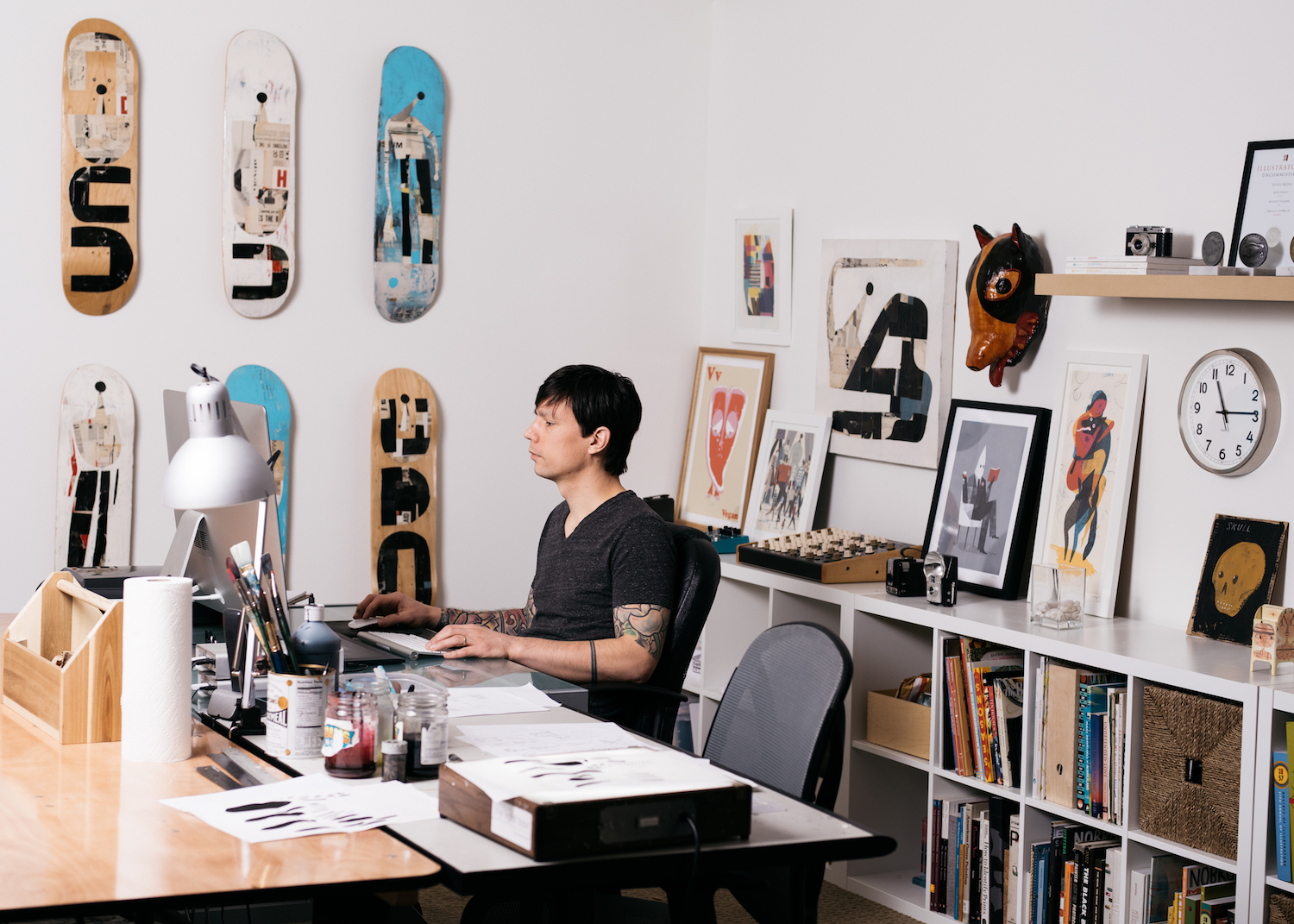
What other artistic medium do you find the most compelling (i.e. film, music, literature etc.)?
I get a lot out of making music. I used to play in a lot of bands until just recently and there is a lot of overlap between painting a picture and composing a piece of music. They both utilize textures, layers, and compositions. In both cases you’re taking individual elements and fitting them together in a way to make a cohesive form that is greater than the sum of it’s parts. I get a lot out of listening to what a band does texturally and compositionally and translating that into my own work. I’m also just a big gear nerd. I love vintage drum sets, particularly Ludwigs from the 1960’s. They’re like works of art to me. I could stare at them for hours. I also really like playing analog synthesizers. I love making something from nothing. I’m not really into going to parties or laying on a beach or playing sports. My idea of fun is starting out with nothing and after a few hours having a finished illustration or piece of music. The act of making something that didn’t exist a few hours prior is one of the most rewarding experiences for me.
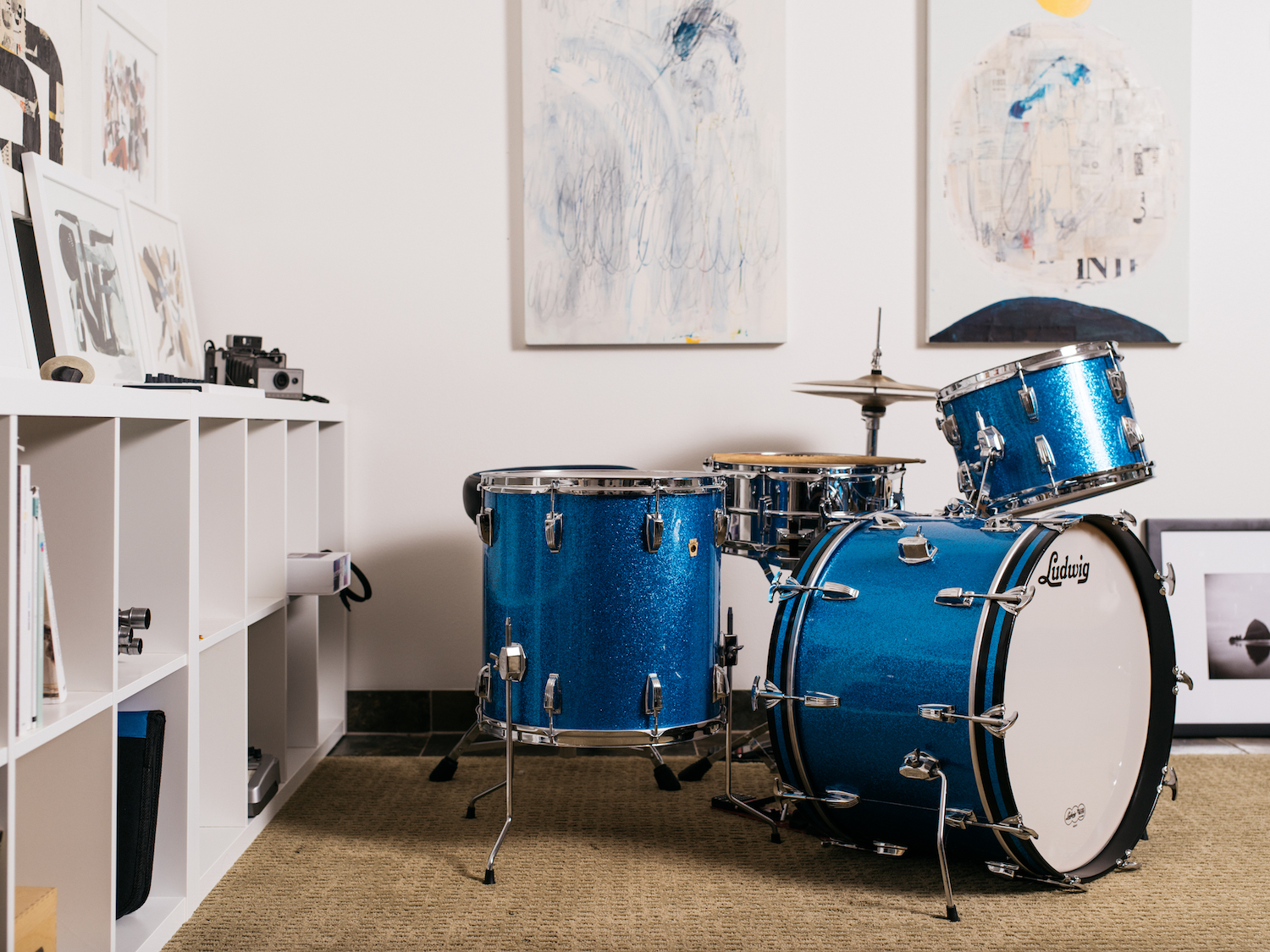
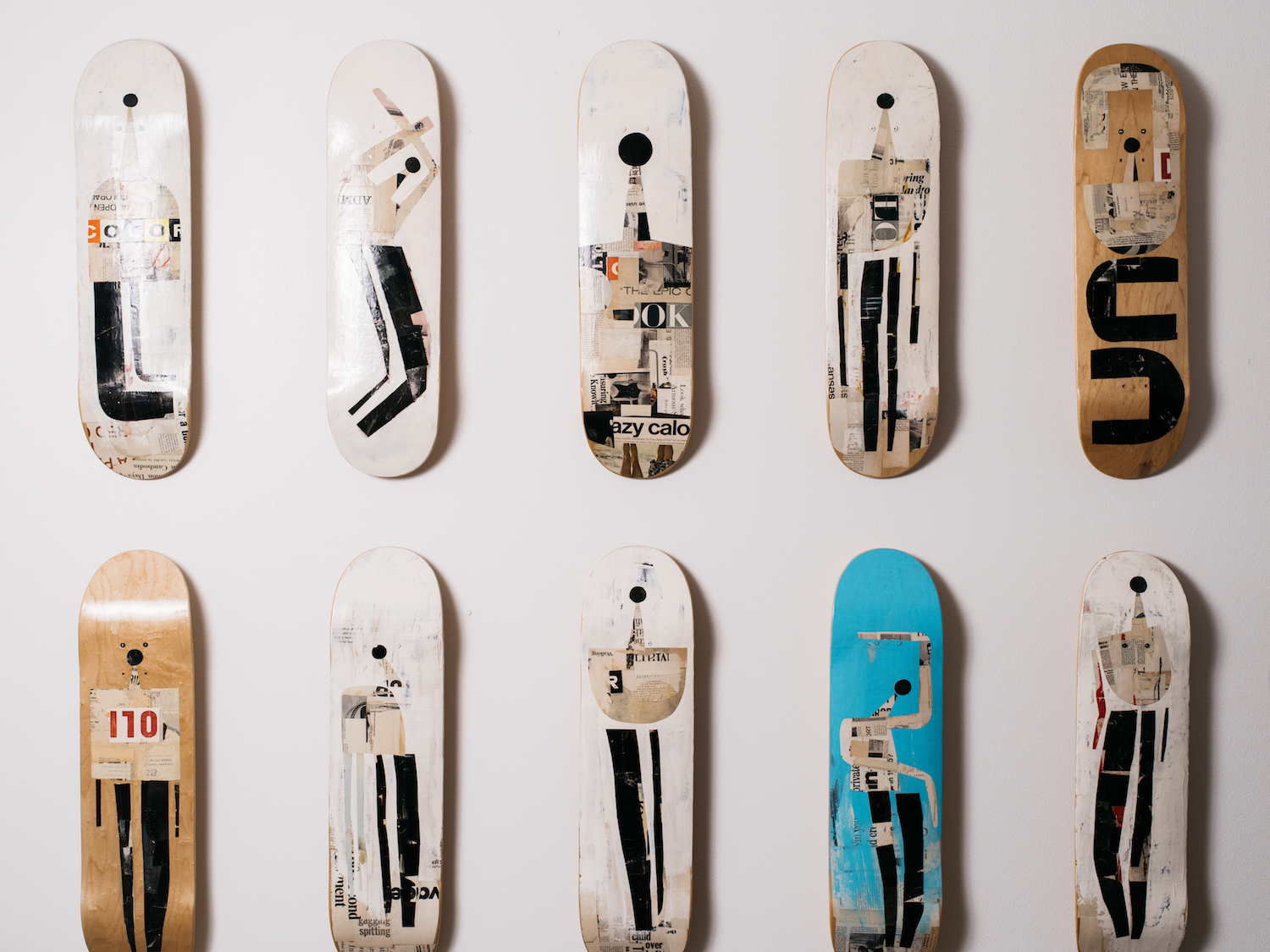
If you could create album artwork for any band (current or past), who would you choose?
That’s a tough one. I have a lot of respect for album cover art. I don’t actually think my work would do well for most bands, and rarely do I think I could improve on an album cover of the bands I like. However I’d love to get a call from David Bazan. I’d love a chance to collaborate with him. I’d also love to do something for William Basinski, his Disintegration Loops are some of the most haunting and beautiful pieces of recorded music ever and it would be a real treat to explore his work visually.
Answer these, quick!
Something you do that always makes your kid laugh:
Dancing like C+C Music Factory then falling on my face and hurting myself. Works every time.
A color you’d never wear:
Purple?
A language you’d like to learn:
Japanese. No, wait, Italian. No, Japanese!
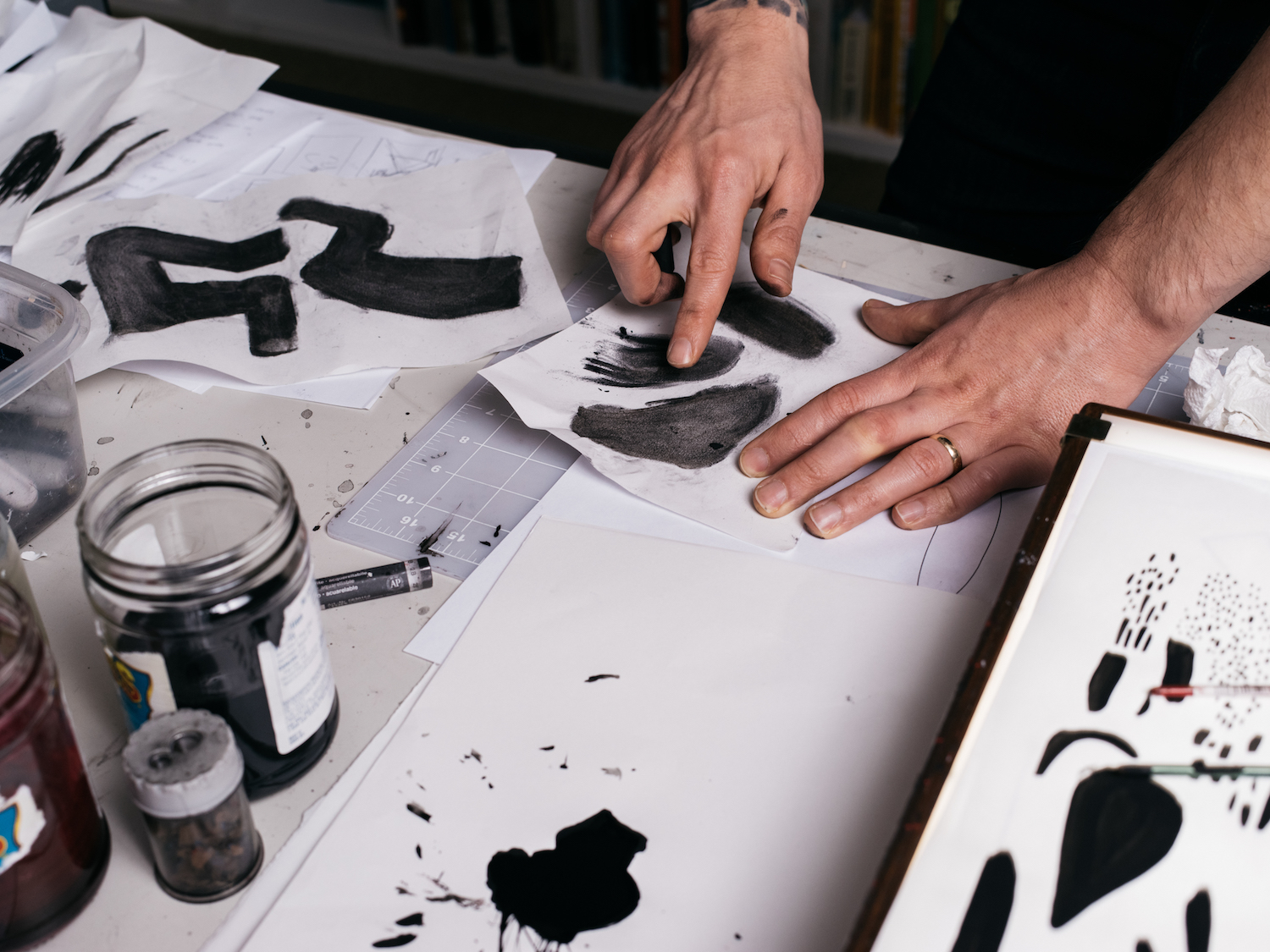
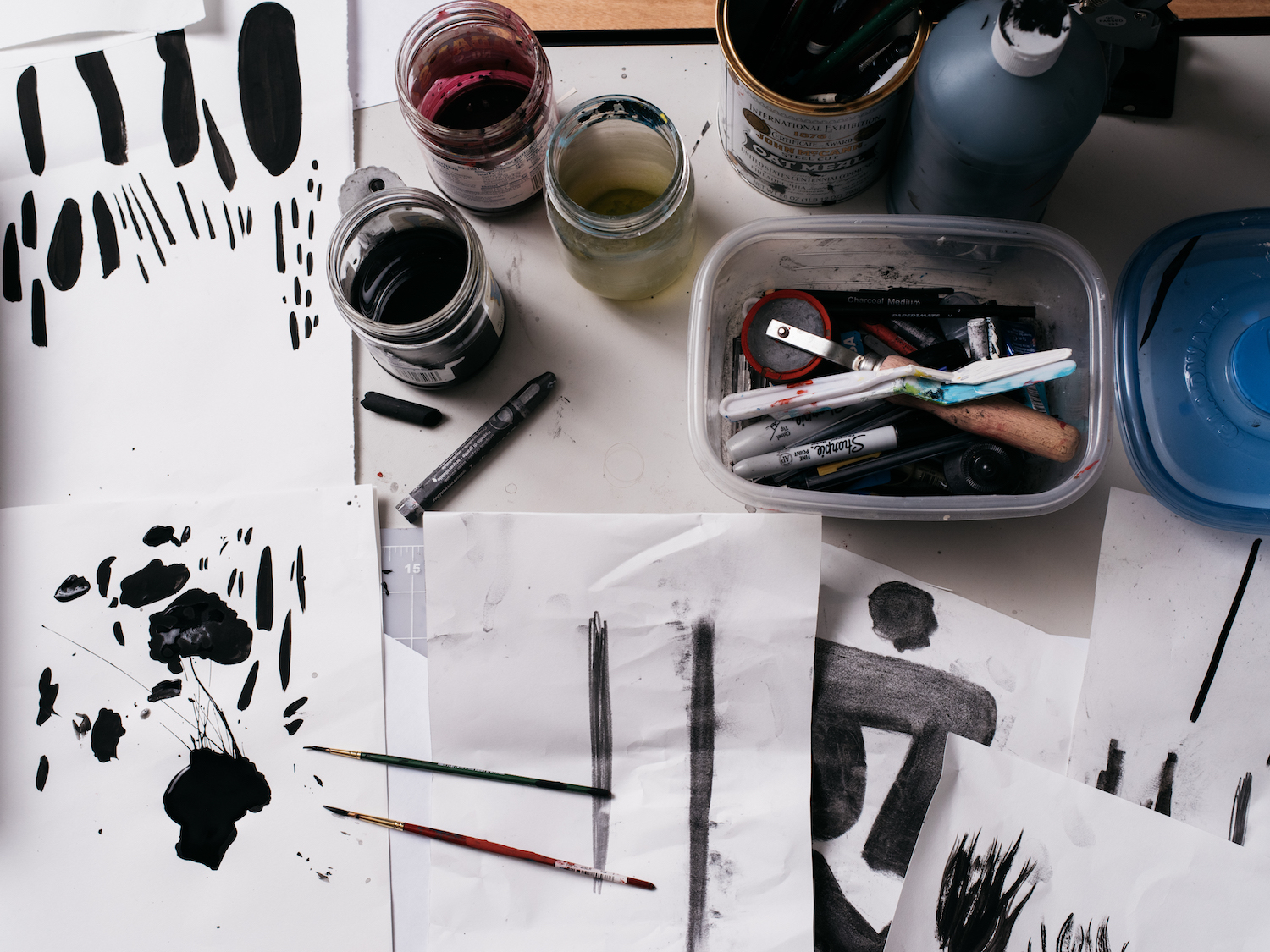
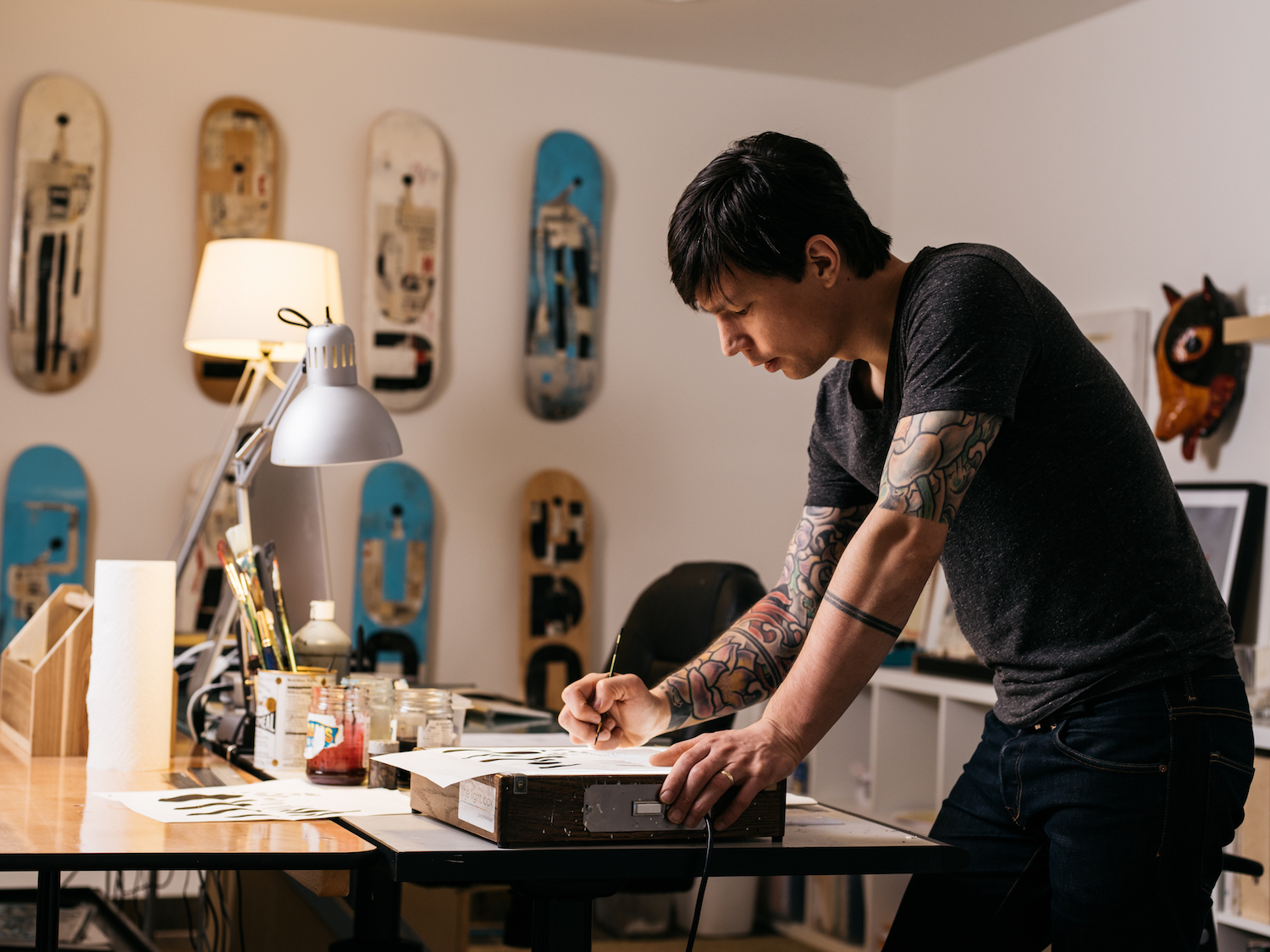
Photos by Kyle Johnson.
Comments